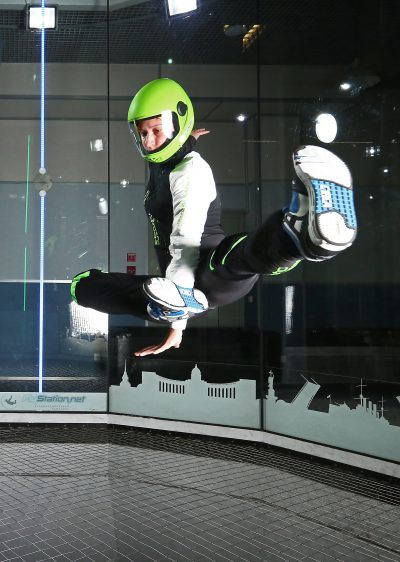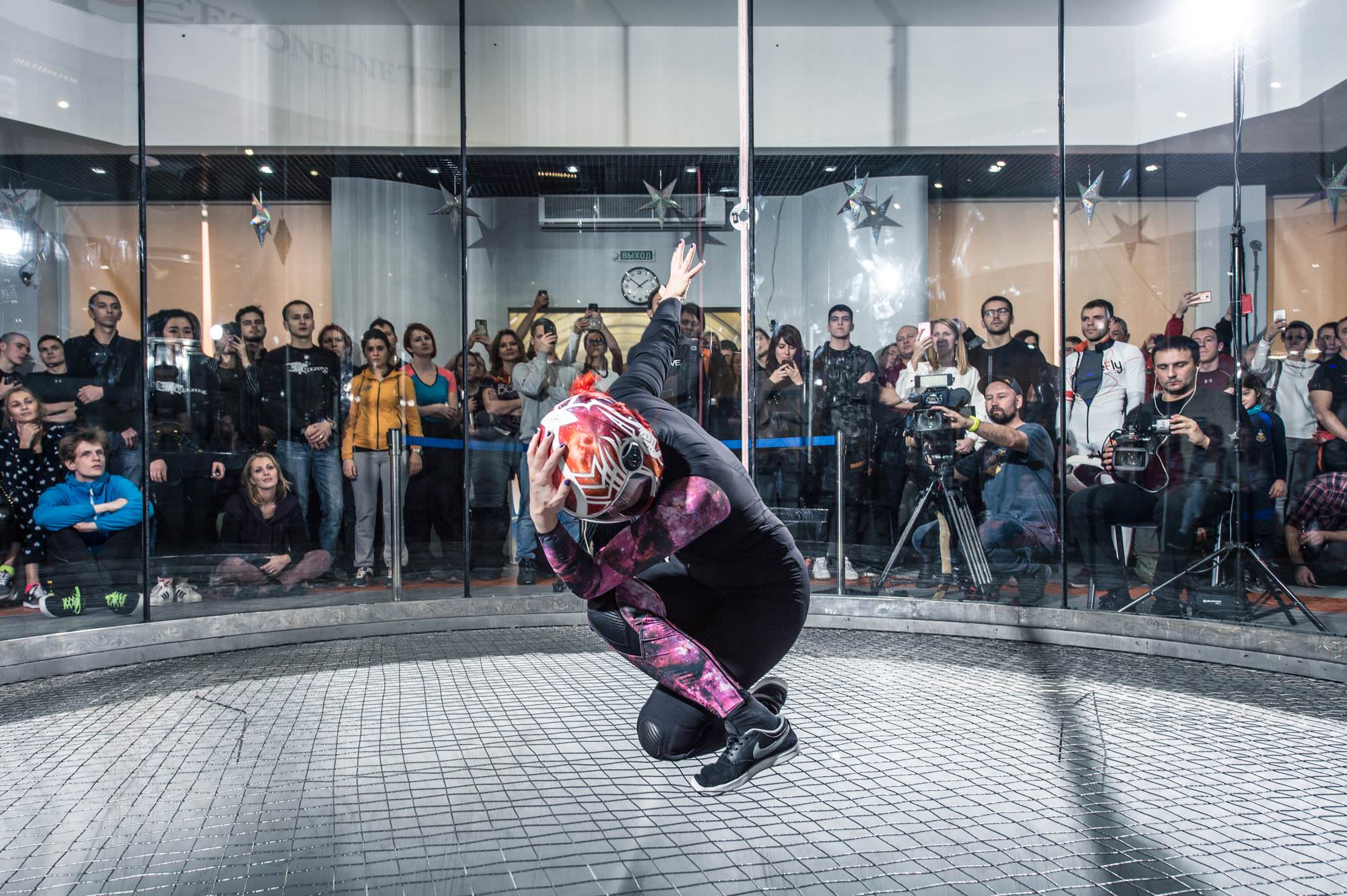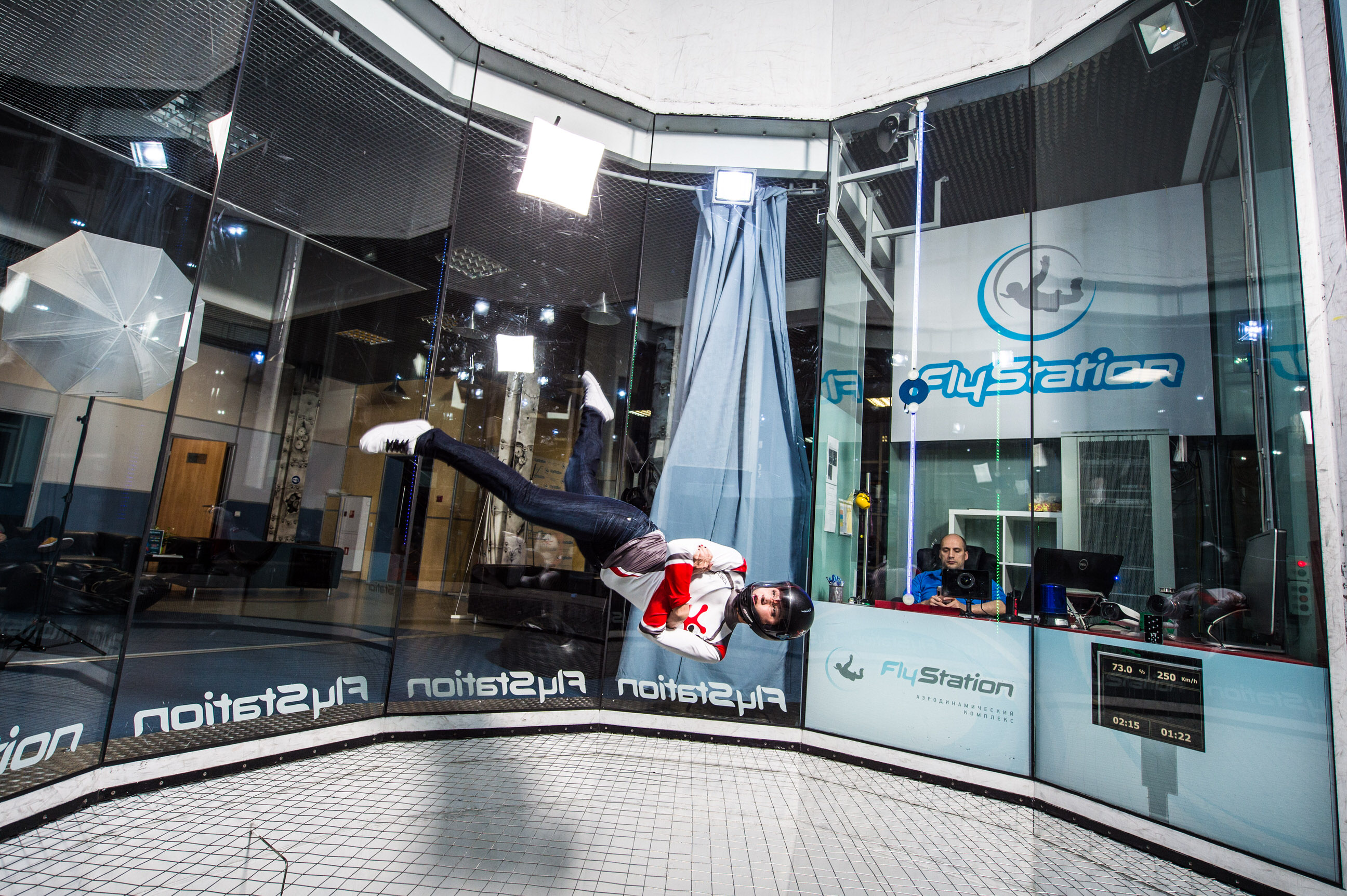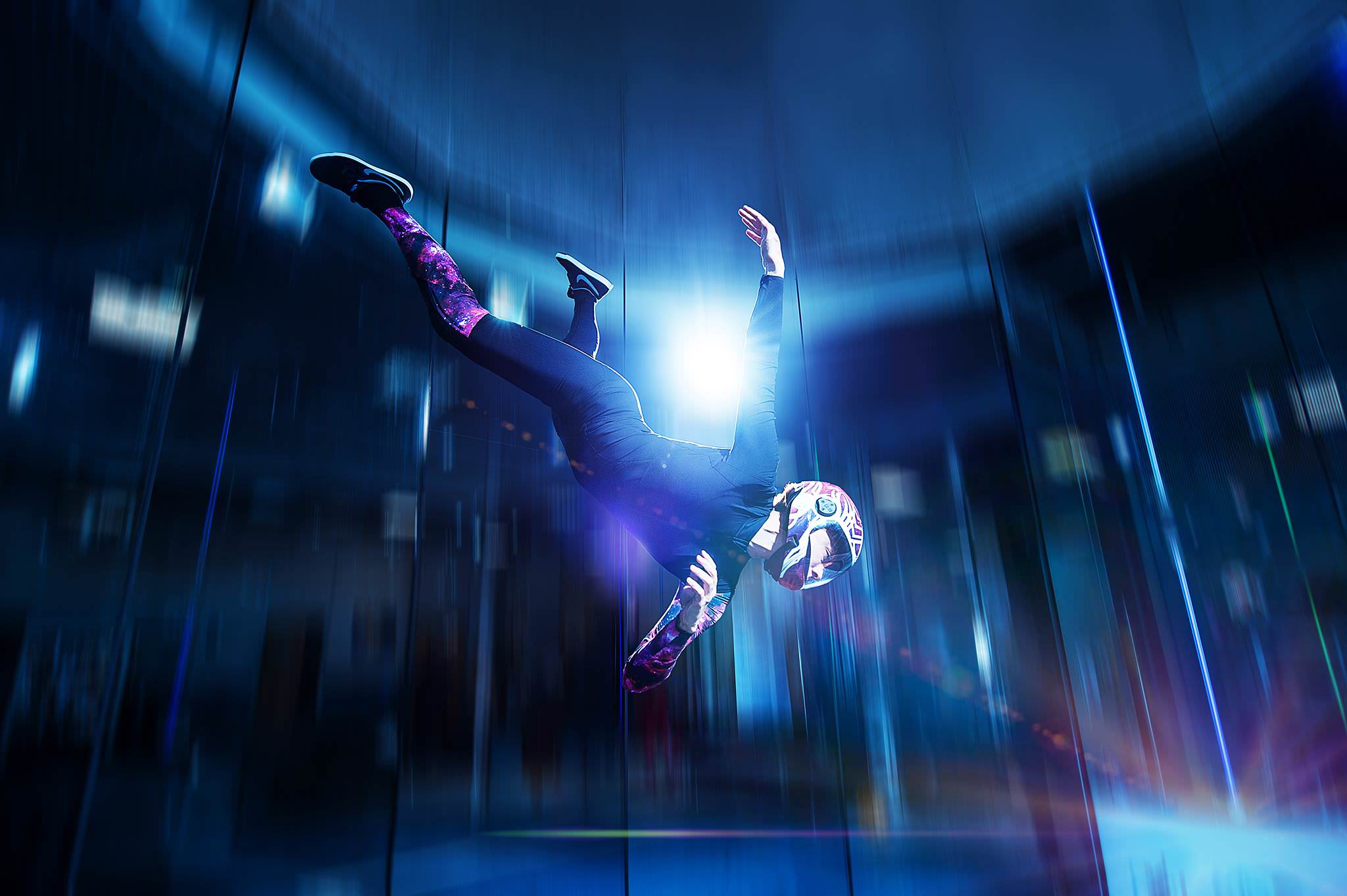
All About Olga Bakulina
Tuesday, March 27, 2018
- Team CYPRES
- 3/27/18
- 0
- General, Sponsored Athlete
Header photo by Lauri Aapro
Now That’s Some Fiercely Female Freestyle

When we talk to Olga Bakulina, she’s having a well-deserved moment of relaxation after a long day of coaching at the Flyspot wind tunnel in Katowice. Now one of the world’s most sought-after bodyflight coaches, Olga’s time in the sky is limited—but her contribution to the advancement of the discipline hardly is, and that’s why we’re so proud that she’s a CYPRES athlete.
Olga was born and raised in Moscow, both as a person and as a bodyflight athlete. She did her very first jump, in fact, at the tender age of 15. Ironically, there was no freefall involved in that jump. That said: It’s lucky she didn’t. After all: It was in the middle of the Russian winter.
“That was in 1999,” Olga explains. “It was a static line jump—just jumping out of the plane, pulling the ripcord and hoping for the best. It was proper winter. January, lots of snow. I fell in love with it anyway. Honestly, I just wanted to jump. It was a matter of having good thermal underwear, thick gloves and covering your face so it wouldn’t get frozen. It wasn’t torture. My coldest skydive was when it was minus 32 Celsius on the ground and minus 45 at the 13,000 feet.”
After she had a few jumps under her belt, Olga moved to the Russian skydiving Mecca of Kolomna. That was her home dropzone for several years, serving as a base of operations as she traveled to jump at other Russian, European and American dropzones. As the seasons passed, Olga started spending more and more time based at the significantly balmier Skydive Arizona.
“That’s where I first started to do tunnel flying,” she remembers. “When I already had 1,500 jumps, I tried the tunnel for the first time and got hooked right away. Like everybody does, I started training in the tunnel in order to get experience to be a better skydiver. Eventually, it turned out to be its own thing.”
Over the course of her 4,000-and-counting skydives, Olga has ended up spending a lot of time in the skies over Eloy. In 2008, she participated there in the women’s vertical record. (She’s done a European vertical record, as well.)

“The competitions and the records are cool,” she says, “But sometimes it’s the people that make the jump. One of the coolest skydives I have had—in my top ten, for sure—was a night jump at Skydive Arizona with Steve Curtis and Jeff Provenzano. We did a night jump, and we were freeflying. They call it ‘zoom-zoom.’ You just chase each other around the sky, basically: Jump out, carve, track. That jump felt like chasing shadow because it was dark and we were all shadows, flying with other shadows. It was almost psychedelic, in a way, but also because it was night time, and your feelings and sensations are so much more sharp.”
As her time at Skydive Arizona—and, as part-and-parcel of that, the local wind tunnel—progressed, Olga quickly decided that she wanted to become a tunnel instructor. Unfortunately for all women at the time, nailing down that job as a female athlete was an uphill battle, to say the least. Women were, for a variety of reasons later disproven as unscientific and misogynist, all barred from becoming tunnel instructors, and becoming a tunnel instructor remains the surest path to tunnel mastery for a non-independently-wealthy person. Olga chipped away at the wall between herself and tunnel-instructor employment for a grueling four years, working full-time in skydiving all the while.
Suffice it to say, she only made her goal when she returned to Russia. She booked a flying gig at FlyStation in Saint Petersburg. She moved there for the work, but her relationship with the place goes far beyond the professional. She waxes poetic when you ask her what the city is like.
“Saint Petersburg in the summertime is awesome,” she enthuses. “So nice; so warm; so beautiful. There’s a lot to see besides the tunnel—and the food is good, and pretty cheap. There’s lots of nature around. I love it.”

It was in Saint Petersburg that Olga’s tunnel obsession started to take shape. As a full-time instructor with access to that rarefied training ground, her skills improved exponentially. She began to train for competitions. Even with all her 4,000 jumps all over the world, her many freestyle wins and all her time on the world record circuit, most skydivers are most familiar with Olga as a sassy top performer in a tight jumpsuit—with no rig in sight.
“Because I’m a full time instructor and busy at the tunnel,” she explains, “I don’t skydive that much anymore. Skydiving is cool and I love to do it when I can, but I have been doing it for many years. Now, I just put my suit on and my helmet and go play. I can be in the wind for a long time, just creating. The visuals are not as cool, but the sensation of the wind and what you can do with this kinda makes up for that.”
“Also,” she adds, “It is visible for people. People can see you—not on video, but live. That’s a special feeling.”
For Olga, the benefits of tunnel flying go beyond the extended freefall time and the playful, dancerly approach to bodyflight that the tunnel facilitates. It’s a bit more psychological; a bit more personal.
“It feels a little like meditation, in a way,” she explains. “if I’m in a bad mood from whatever, I can always go and fly and come out feeling better. It’s like a little therapy.”
“Of course,” she adds, “It really depends on what I’m doing. If I’m competing, or preparing for a competition, it’s a different thing. Then, my concentration is more intense. Sometimes it becomes a little too routine, because in the tunnel very often you do the same stuff over and over again. And sometimes things don’t work the way you want them too. It is an interesting process, but it is a creative process and it is a learning process. A whole bunch of emotions involved in that. I like it a lot.”

When her students are caught up in the intensity of that learning process—and we all are, to some extent—Olga offers her best advice to release some of the pressure.
“I just try to tell them to be patient,” she smiles. “Everybody learns individually, and it is always frustrating. Some students feel like they’re not doing well enough, but that’s not the case. Some people learn things faster and some slower. It is different for everyone. I can give my own example: When I was learning, I was frustrated in many things. It’s not like you are ‘bad at it’ or ‘good at it.’ You’re learning something new, and you need some time to feel it.”
“Basically, the whole sport of bodyflight is a balance in muscle memory,” she concludes, “And until you physically feel it, you cannot understand it. Be patient. Keep doing it. You are going to feel it eventually, and then it is going to stay. Then nothing will take it out of you.”
————
CYPRES is proud to support Olga Bakulina as she leads the forward charge to innovate and teach the art and science of bodyflight. To reach out to Olga for coaching, reach her via her Facebook page: https://www.facebook.com/olgabakulina10/ or her e-mail (sfreefly@gmail.com).
Tags: Freestyle, Olga Bakulina, Tunnel
Adventure, Tips, and Adrenaline
Subscribe to Our Newsletter
By signing up for our newsletter you declare to agree with our privacy policy.

